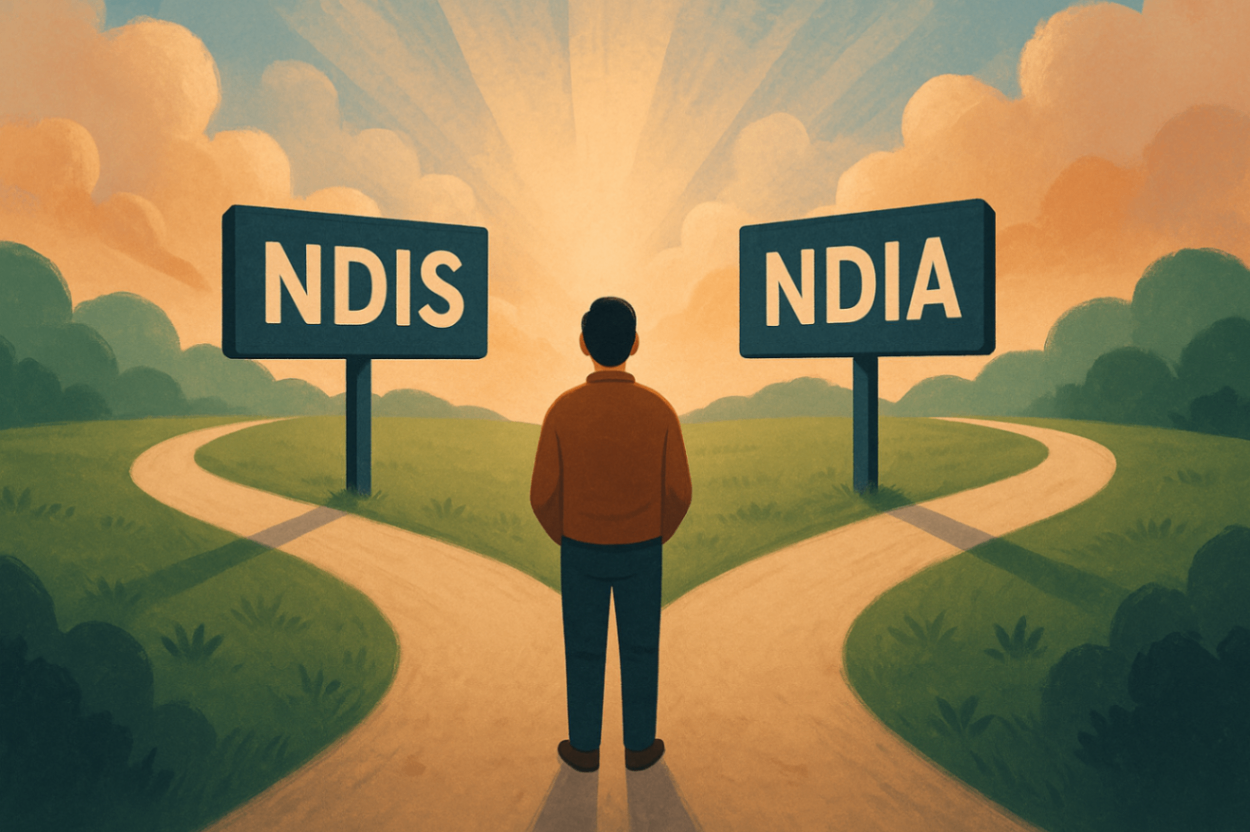
what is the difference between ndis and ndia?
23 June, 2025

Key Highlights
-
Gain clarity on the critical differences between the National Disability Insurance Scheme (NDIS) and the National Disability Insurance Agency (NDIA), two pivotal entities shaping disability insurance in Australia.
-
Understand how the NDIA oversees the NDIS, focusing on creating, approving, and managing participant plans as part of the disability insurance scheme.
-
Discover how NDIS funding is assessed and allocated to eligible participants, enhancing opportunities for community participation and independence.
-
Address common misconceptions in the disability community, ensuring greater transparency and accurate understanding of NDIS and NDIA roles.
-
Learn how eligibility for NDIS supports is determined under the National Disability Insurance Scheme Act, including the department of social services (DSS) role in facilitation.
Introduction
Navigating Australia’s disability support system can be confusing—especially when it comes to understanding the difference between the National Disability Insurance Scheme (NDIS) and the National Disability Insurance Agency (NDIA). Although the terms are often used interchangeably, they refer to two distinct but interconnected parts of the system. The NDIS is the scheme that provides funding and support for eligible individuals with disability, while the NDIA is the government agency responsible for managing and delivering that scheme.
For families, carers, and service providers, knowing how the NDIS and NDIA work—and how they differ—is essential. This knowledge can help you make the most of your NDIS plan, understand your rights and responsibilities, and connect with the right services at the right time. Whether you’re new to the NDIS or already managing a plan, understanding these two key pillars of disability support can make a real difference in navigating the system effectively.
For a quick read on how families access behaviour supports under the scheme, see Navigating the NDIS for Behavioural Therapy.
Understanding the NDIS and NDIA
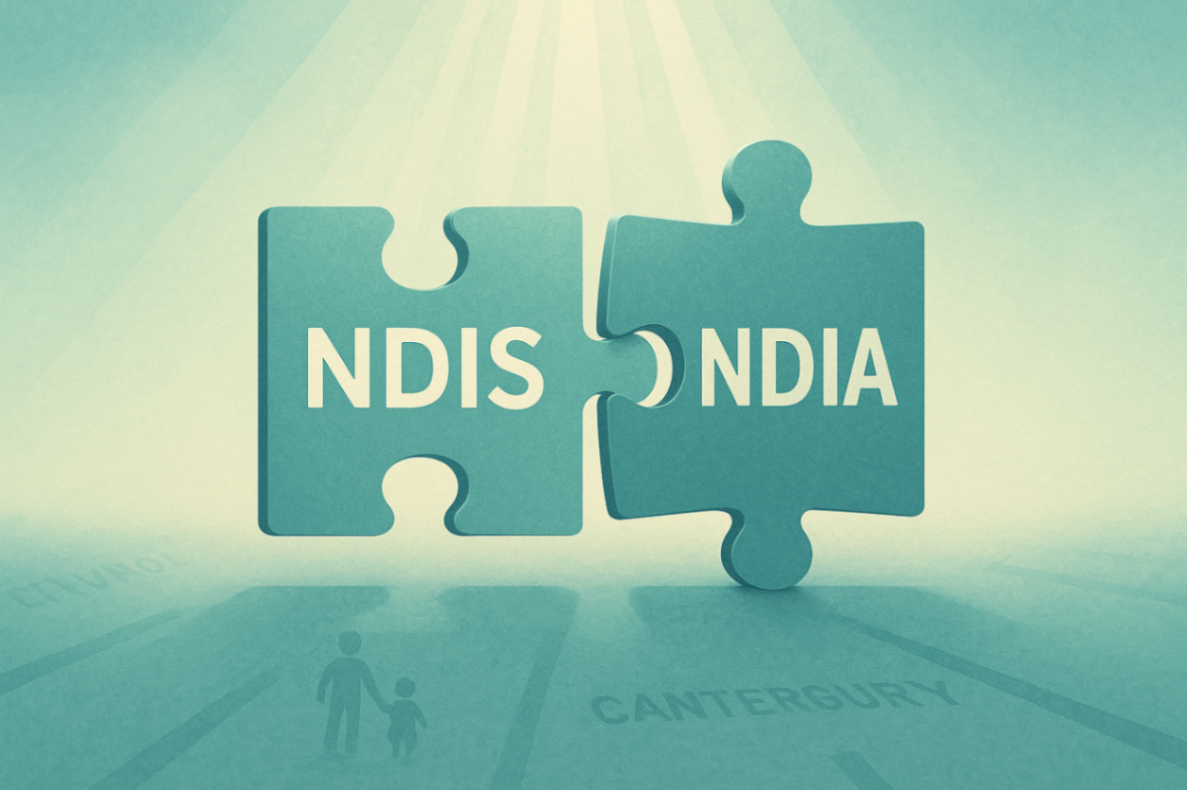 The National Disability Insurance Scheme (NDIS) is a big step forward for disability insurance in Australia. The NDIS was set up under the National Disability Insurance Scheme Act. It gives money for important help to people who have permanent and major disabilities. The main goal is to help people under 65 be more independent and take part in community and work life. The NDIS makes support plans that fit what each person needs, so everyone gets the right kind of help.
The National Disability Insurance Scheme (NDIS) is a big step forward for disability insurance in Australia. The NDIS was set up under the National Disability Insurance Scheme Act. It gives money for important help to people who have permanent and major disabilities. The main goal is to help people under 65 be more independent and take part in community and work life. The NDIS makes support plans that fit what each person needs, so everyone gets the right kind of help.
The National Disability Insurance Agency (NDIA) is the group in charge of running the NDIS. This disability insurance agency is part of the Australian government. The NDIA's job is to make sure that all NDIS plans are approved and done the right way. It is also in charge of giving out money for support and checking that rules around the national disability insurance scheme are being followed. The NDIA also watches service quality and works with all the state and territory governments to help make services better. Knowing what the NDIS and NDIA each do makes it clear how support from the disability insurance scheme is given and helps stop any mix-ups about the difference between them.
Definition of NDIS (National Disability Insurance Scheme)
The National Disability Insurance Scheme, or NDIS, is a plan by the Australian government. It is there to help people with a permanent and big disability. The main aim is to improve life for NDIS participants by helping them get the services they need. It also helps get people more involved in the community. The disability insurance scheme gives support through funding and by setting up plans that meet people’s needs. These cover things like disability services and behavioural therapy.
This scheme is open and clear in how it works. That is very important for social services in Australia and the Commonwealth. It is important for people who need extra help, including younger people living in aged care. The NDIS and its focus on transparency, access, and community participation make it a key part of care and support in Australia.
Definition of NDIA (National Disability Insurance Agency)
The National Disability Insurance Agency, or NDIA, is the main group that runs the National Disability Insurance Scheme (NDIS) in Australia. This disability insurance agency works to improve the quality of disability services for people all over the country. It does this by working with service providers, NDIS participants, and other important groups, including the Council of Australian Governments. The NDIA helps make sure that people get the support and resources they need under the National Disability Insurance Scheme Act. The agency focuses on transparency and tries to boost community participation. It wants to give people with disabilities and their families more control over their lives through the disability insurance scheme.
Key Differences Between NDIS and NDIA
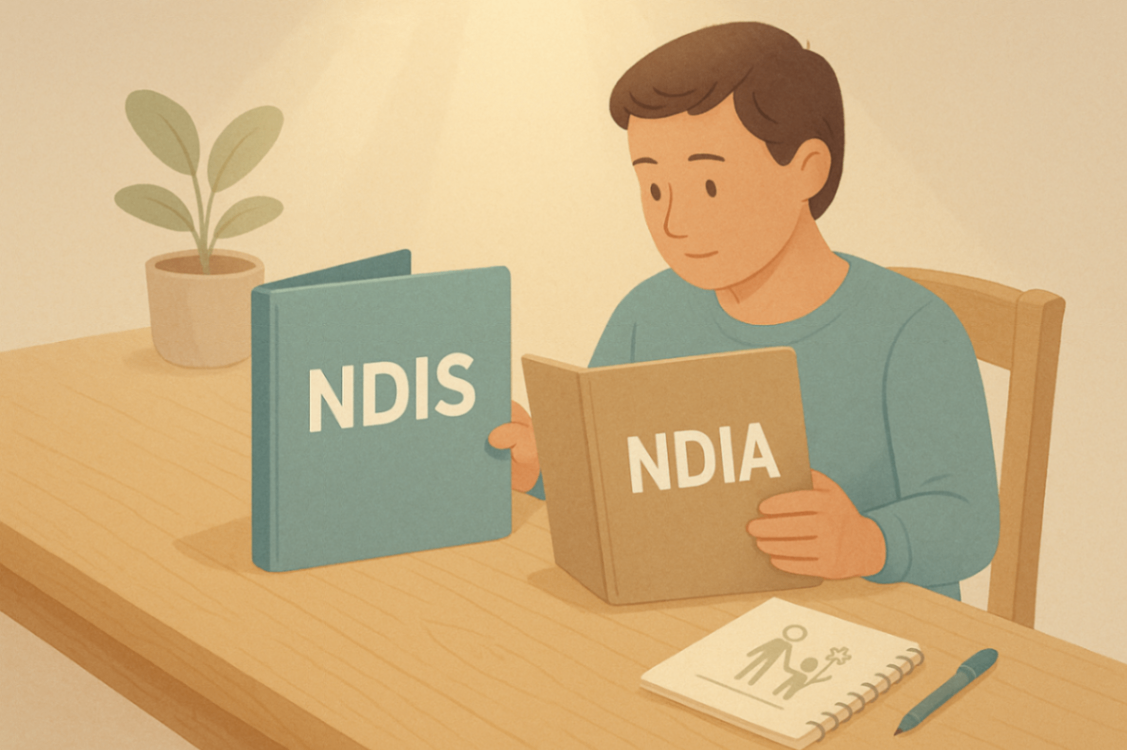
Though connected, NDIS and NDIA serve distinct functions within the disability insurance scheme landscape. While the NDIS provides funding directly to participants for "reasonable and necessary" disability supports, the NDIA acts as the administrative authority, ensuring these supports align with legislative standards and participant needs. Their combined efforts enhance the lives of Australians living with disabilities.
To simplify, here’s a table highlighting their key differences:
|
Aspect |
NDIS |
NDIA |
|---|---|---|
|
Purpose |
Funds essential supports for eligible participants |
Manages, approves, and oversees participant plans |
|
Focus |
Individualised participant funding and independence |
Governance, compliance, and administrative oversight |
|
Management |
Supports funded under the NDIS Act |
Operates under DSS, ensuring plan alignment and integrity |
|
Collaboration |
Works with registered providers and participants |
Coordinates with state and territory governments |
Curious about cost and funding? Read Cost & NDIS Funding Options for Behaviour Therapy.
How NDIA Manages the NDIS
The NDIA looks after the NDIS to make sure it runs well and meets its goals. The team deals with the way funds are given out, keeps records for every person, and says yes or no to plans based on each person's needs. The NDIA uses good systems like PACE to help keep things running the same way for everyone and to cut out any issues or wasted time.
The NDIA also works to build up the workforce. It helps bring in skilled support workers and works with different service providers. This helps more people know about the scheme and lets more people get help. The way NDIA manages things makes sure the NDIS stays strong, so everyone can get the right support on time.
Plan Approval and Management
NDIA helps make plan approval easy for people, and each plan is made to fit what the person needs. You can choose to manage your own plan, pick a registered provider, or let NDIA handle it. These choices let you stay flexible, and also make sure service providers give good care.
Plan management is more than just approval. It includes regular check-ins. NDIA lets you ask for changes to your plan when things in your life change. For example, if you have less support from family, or if your needs change because of your disability. These checks help the support stay right for you and do not harm your rights.
The planning process at NDIA is a team effort. It includes talking with support workers, participants, and registered service providers. This helps make sure your plan gives you the best support and also follows the rules of the NDIS.
Monitoring and Reviewing Participant Progress
The NDIA keeps track of how well people are doing in their NDIS plans by checking plans often and asking for feedback. If there are any changes in what a person needs, they should let the NDIA know. This helps the NDIA to make updates to plans at the right time. The main goals of these reviews are to help people use their NDIS funding in a good way and to make sure everyone follows the scheme rules.
The NDIA also watches how well registered providers are doing. They look at the quality of services the providers give. The NDIA works with the NDIS Quality and Safeguards Commission to make sure everyone follows the code of conduct. Working together helps fix any gaps in what people need and makes sure care stays at a good level.
The NDIA always puts the person first, making sure progress can be seen and changes can be made when needed. Their review system helps find ways to make the ndis better for everyone. This helps raise the ndis quality for the whole disability community.
Common Misunderstandings About NDIS and NDIA
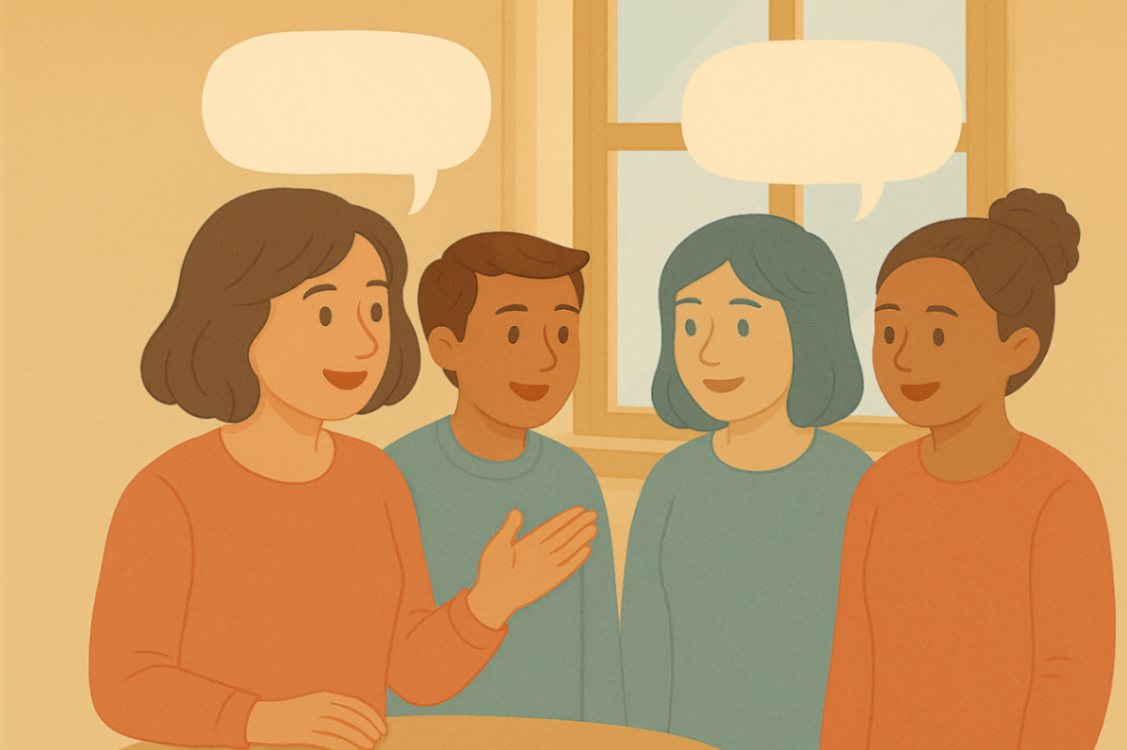 Misunderstandings often come up about the roles of ndis and ndia. This happens because the two work closely together. Some people think the ndia gives direct support, but that is not true. The ndia only manages and looks after the framework where many other providers give services.
Misunderstandings often come up about the roles of ndis and ndia. This happens because the two work closely together. Some people think the ndia gives direct support, but that is not true. The ndia only manages and looks after the framework where many other providers give services.
There is also a lot of confusion about ndis funding and who is eligible. The ndia works to create transparency. It helps people find their way through these tricky parts. Making these things clear helps both participants and providers. This way, everyone can be a part of the scheme without any confusion or doubt.
Misconceptions in the Disability Community
False ideas can get in the way of how people use the NDIS. Many people believe the wrong things, such as:
-
NDIA’s Role: Some people think the NDIA is a direct service provider, but the NDIA only looks after administration and monitors the system.
-
Funding Misuse: There are worries about where the money goes, which comes from people not knowing enough about NDIS transparency.
-
Eligible Age: People sometimes think anyone can use the NDIS, but it is only for those under 65.
-
Service Limitations: Some think that the NDIS pays for general healthcare, but it is only for support with a disability.
Fixing these false ideas will help participants and providers better understand how the ndis and ndia work. This makes the goals and rules of the scheme clearer for everyone.
Clarifying Roles for Providers and Participants
To help people understand the NDIS and NDIA better, it is good to know the responsibilities of the NDIS and the different roles they have. Providers give services that are paid for by the NDIS. They make sure that each person’s needs and goals are met. People who use the NDIS can choose what kind of supports they want so the help fits them.
The ndia checks that providers follow quality rules. It also helps fill any gaps between state rules and federal rules. This makes things clear. It also stops people from getting the wrong idea about how the ndis and ndia work.
People who use the ndis should look after their own plans. They can talk to registered providers and ndia staff often. This will help them get the most out of what the scheme can give.
How NDIS Supports Are Accessed
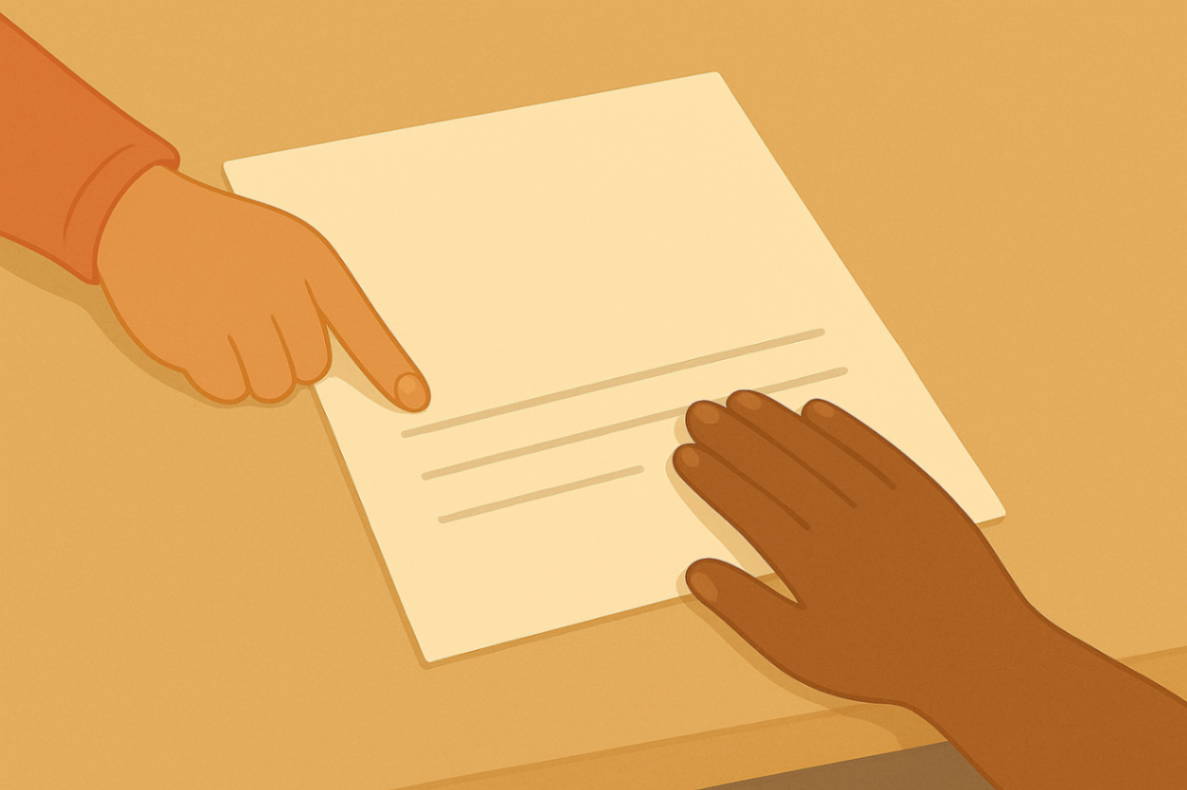
To get help through the national disability insurance scheme, people need to meet certain eligibility steps. These steps are clearly stated in the National Disability Insurance Scheme Act. This rule makes sure that the funding goes only to those who have a big and ongoing disability. People who want to join must show proof to show they are eligible, and they also need to take part in checks done by special healthcare workers.
People pick the support services they want, based on plans that are made just for them. This system is made to be open and fair. It helps make sure Australians with disabilities get what they need to have a good life. The disability insurance scheme wants all its support and help to be out in the open, giving people the power to do well. The ndis stands for helping those who need it most, by giving their resources to the right people.
For a practical, step-by-step walkthrough of how families in Liverpool and nearby suburbs use their NDIS funding for these services, see our guide: How to Access Specialised Behaviour Support (step-by-step).
Eligibility Requirements for the NDIS
Eligibility for the national disability insurance scheme is set out by the national disability insurance scheme act. You need to meet a few key points to get disability insurance.
-
Age Limit: You must be between the ages of 6 and 65 years old.
-
Disability Impact: Your disability needs to make day-to-day life or doing things with others much harder for you.
-
Permanency: Your disability has to be something that will last for a long time.
-
Residency: You need to be an Australian citizen or have the right residency status.
These rules help make sure that the disability insurance scheme gives help to the people who need it most. This also helps the national disability insurance scheme keep working well for everyone now and in the future.
Application and Assessment Process
The application process asks each person to show proof of how their disability affects their daily life. Support workers and medical experts help with this step to make sure all the information is right and complete. The review happens separately from the application, and it looks at what a person can do in day-to-day jobs.
When you get approved, you will get a plan made just for you. This plan explains how much money you get for support services in line with NDIS rules. Later reviews will check that you still need these supports and will change your plan if your needs change.
This simpler process helps more people get the money they need, while keeping the whole NDIS system fair and strong for the future.
How This Impacts Your Access to Behaviour Therapy
NDIS funding helps people get behavioural therapy if they are eligible. This therapy works on social skills, how people speak and listen, and how they deal with problems in daily life. The NDIA checks that these supports match what each person needs for effective behavioural therapy, so they can grow and do well.
When a person’s therapy needs change, the NDIA looks at their plan and makes updates if needed. This helps lower barriers for people to get the right supports. It also helps them keep their independence and get the most out of their NDIS plan.
How We Help Liverpool Families Navigate the NDIS System
Families in Liverpool and surrounding suburbs like Casula, Prestons, Wattle Grove, Moorebank, Lurnea, Hoxton Park, Miller, Green Valley, Chipping Norton, Warwick Farm, Mount Pritchard, Cabramatta, Glenfield, and Bonnyrigg can count on experienced NDIS service providers to guide them through the system. These local providers understand the unique needs of the community and offer personalised support that helps NDIS participants access services confidently.
From helping you apply for NDIS funding to managing your plan and connecting you with local behavioural therapy providers, our team is here every step of the way. We also support NDIS participants in building life skills, accessing community activities, and achieving greater independence.
If you’d like to learn how NDIS funding can be used for direct clinical supports, see our overview on NDIS Behaviour Therapy: Collaboration with schools.
Conclusion
Understanding the difference between the NDIS and the NDIA is essential when navigating Australia’s disability support system. The NDIS provides funding and services to eligible individuals, while the NDIA is the government agency responsible for running and overseeing the scheme. When these roles are clearly understood, it becomes easier for families to access the right supports and avoid unnecessary delays. With the right information—and the right team by your side—you can make informed decisions and get the most out of your NDIS plan.
Ready to Navigate the NDIS with Confidence? Book your consultation now today to get started.
Frequently Asked Questions
What are the main roles of the NDIS and NDIA in supporting individuals with disabilities?
The NDIS gives help that lets people be more independent and feel part of their community. The NDIA is in charge of managing plans and making sure they follow the rules of the national disability insurance scheme, which includes access for individuals transitioning from residential aged care. Both NDIS and NDIA work together to help people in Australia who live with disabilities. The main goal is to be there for people and support them through the disability insurance scheme.
What is the difference between NDIS and NDIA?
NDIS gives money for necessary supports to people who are eligible for the national disability insurance scheme. NDIA is the group that runs and manages this disability insurance scheme. NDIA makes sure that every plan follows the rules set in the national disability insurance scheme act. It also looks after the day-to-day work for this disability insurance.
Is the NDIA the same as a plan manager?
No, the NDIA is not a plan manager. It is there to check that plans are being followed the right way and the rules are met. Plan managers, on the other hand, handle your plan money and manage things for each person. These plan managers can be private groups that are registered, or the participants can do it themselves.
Is the NDIA a government department?
NDIA is not a government department. It works on its own as an independent group that was set up under the National Disability Insurance Scheme Act. The NDIA looks after the national disability insurance scheme. It does this while the Department of Social Services keeps an eye on its work for the Australian government. The main goal of NDIA is to help people by offering disability insurance. This is all managed as part of the social services by the government.
Can you access NDIS services without going through the NDIA?
No, the NDIA takes care of everything when it comes to plan approval and management under the NDIS. To get services, people need to follow the rules set by the NDIA. This helps make sure they meet ndis eligibility and the funds get sent where they should.
.svg)












